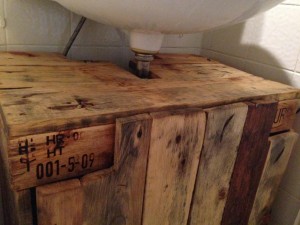
An experiment, and to be honest, against some kind of “pallet philosophy”: made with completely disassembled pallet wood. I always lack the “real pallet-like” feeling. The background here: the dimensions are given, you can not build a cabinet a half pallet size wide because it will be significantly too narrow (otherwise: too wide) for under the sink.
Considerations: the space beyond our washbasin is quite “standard”, 60 cm wide, 60 high, 40 deep. The usage of “standard pallet parts” won’t work since a typical “half pallet” cutted at the central support will become like 50 deep and 70 wide. Therefore: complete dissection and building from scratch. Since I had some spacers left my first considerations went analogous to the kitchen cabinet: “stacked branding signs”, so to speak.
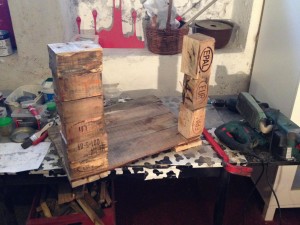
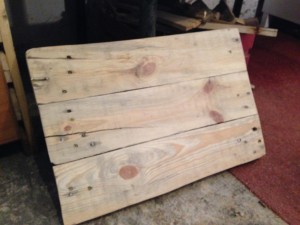
“Stacked brandings” looked uncool, whether vertically or horizontally. Made a shaky impression and would use a lot of screwing/fixing parts “over the corners”, finally, it uses up space without really looking convincing. So, instead, four spacers to the front and some cutouts at the front doors to show off the brandings. That was the plan, and before working it out in detail, first the bottom panels and some footboards.
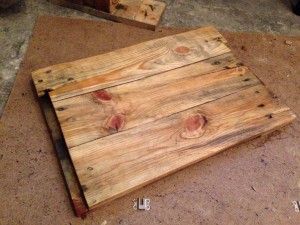
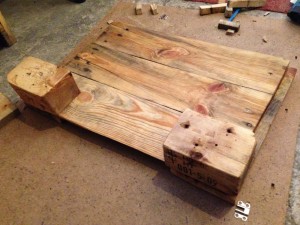
Thoughts while construction: the upper boards of the bottom plate were cut/short at the edges – the gap will be used to put the vertical side boards in. Next: a) sand everything here (reached maximum dissection state) and b) glaze with linseed oil. The piece of furniture will be placed in the bathroom, where it is moist/humid, and I want the wood oiled everywhere, not to have some damp or even moldy edges in a year from now. FYI. it’s about half a year in the bathroom now, everything still looks perfect.
Its my first test case for linseed oiled furniture in a damp environment, so far it looks good.
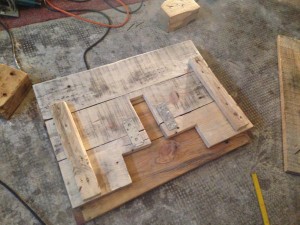
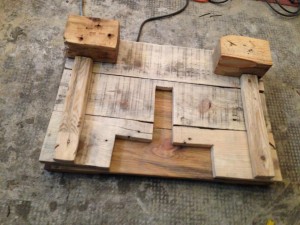
The bottom plate is fixed with footboards. On the top plate, I did not want these, the single boards just needed to be attached in a sufficiently solid way, even with the cutted holes for drain and water supply. Therefore: corner pieces/spacers, two light wood slats and two metal fittings in places that needed some extra fixation.
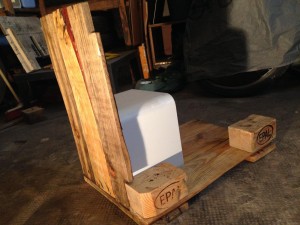
The side wall. The foremost boards have cutouts at the top and the bottom, so the brandings of the spacers in the cabinet corners are visible. This was made mostly by rule of thumb – its helpful to measure exactly, but as long as there are no gaps, a centimeter more or less does not matter.
Nevertheless, I occasionally hate my affection to build stuff sometimes “just somehow”. Nevertheless, if you want that water levelö proof, you’d have to cut, saw, work much more exact. Funny enough, until now, it worked out my way as well. I don’t know exactly, is it luck, or just the flexible material “pulling straight” in the final assembly, or just some routine, that i learned to work simply cleaner/more exact just “out of the hand, probably a bit of everything. Here the goal wasn’t a shut tight cabinet either – its in the bathroom and i like the thought that there are no unvented corners.
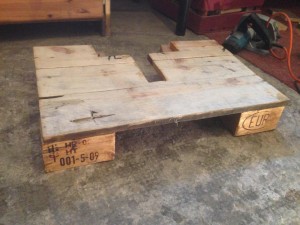
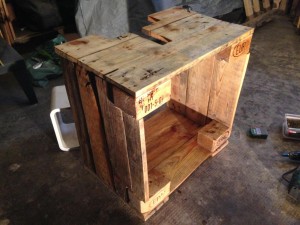

When the frame is up and everything is straight in its place, the rest will be simple.
You lay the “door boards” atol the front opening, pencil the lines where you cut the surplus wood off, cut, sand, varnish and assemble the boards for each of the two doors. I simply attached them from the inner side with some leftover slats.
MIssing after the first final assembly: door handles. Until now – just didn’tz see something what loked like “hay, thats it”, and its fine without them. Later attached: Magnets, in order to have the doors really closed.
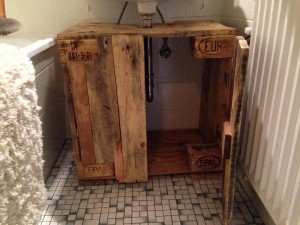
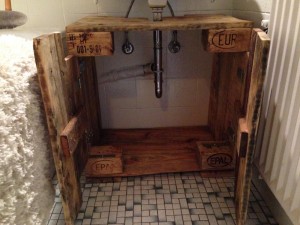
Requirements: I guess I have used here about one single Euro pallet – it’s a little hard to say, because I have also some spare wood residuals from old projects. But you should be OK with one pallet. And a slightly longer afternoon, where once again the sanding is/was the main work. Later: some cupboard door magnets, “angeled” – you need to screw the magnets as well as the metal plates they attach to, its nearly impossible to glue on oiled wood 🙂
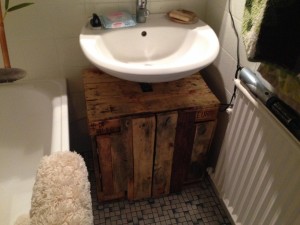
Bathroom cabinet from pallets – Completion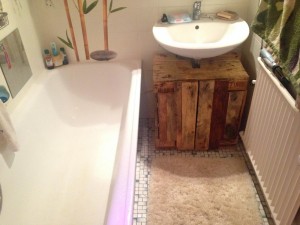
Impression afterwards: i Like it. How the linseed oil / wood will withstand the bathroom environment, time will tell. Half a year later it still tells “OK”.
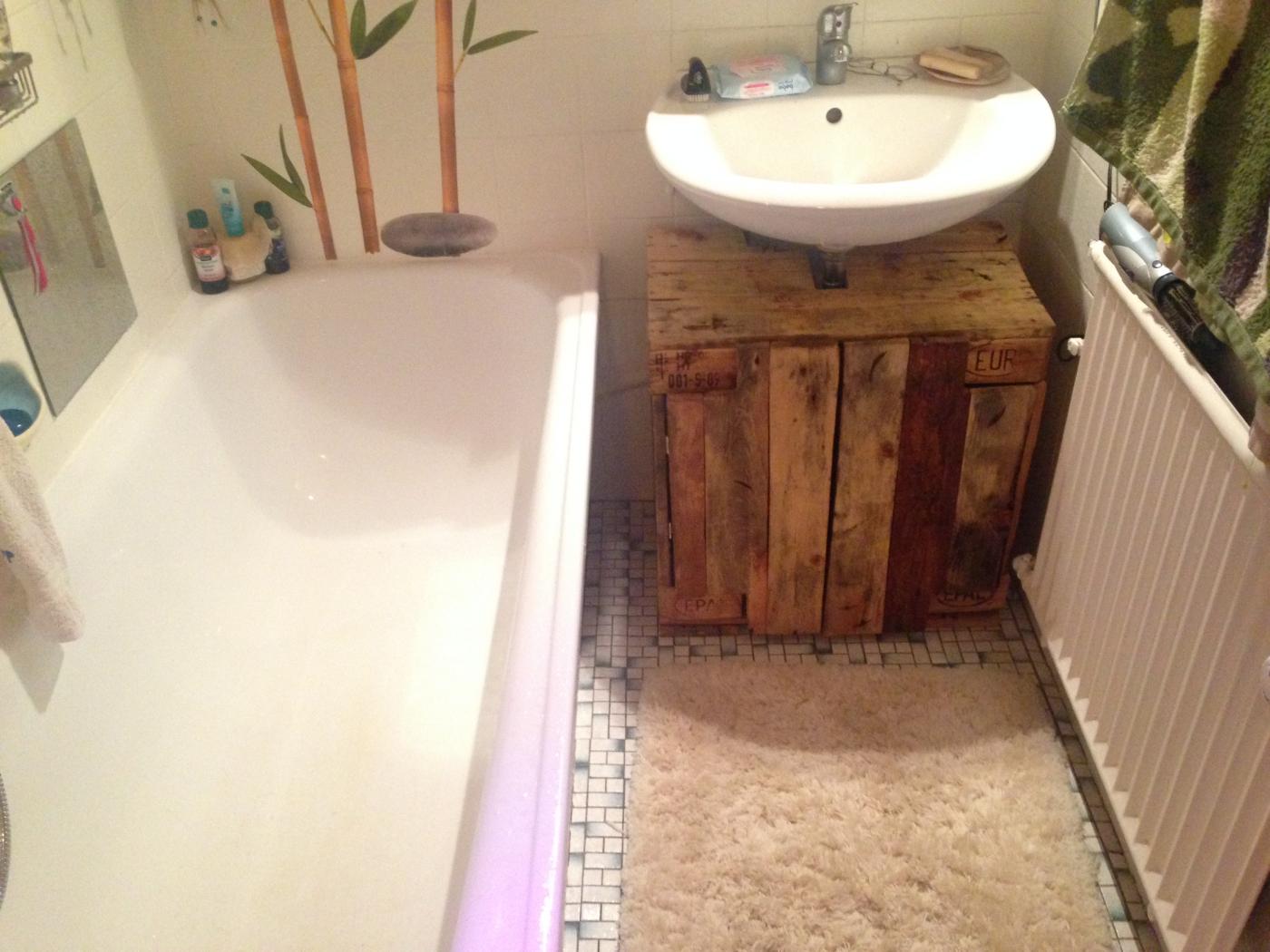
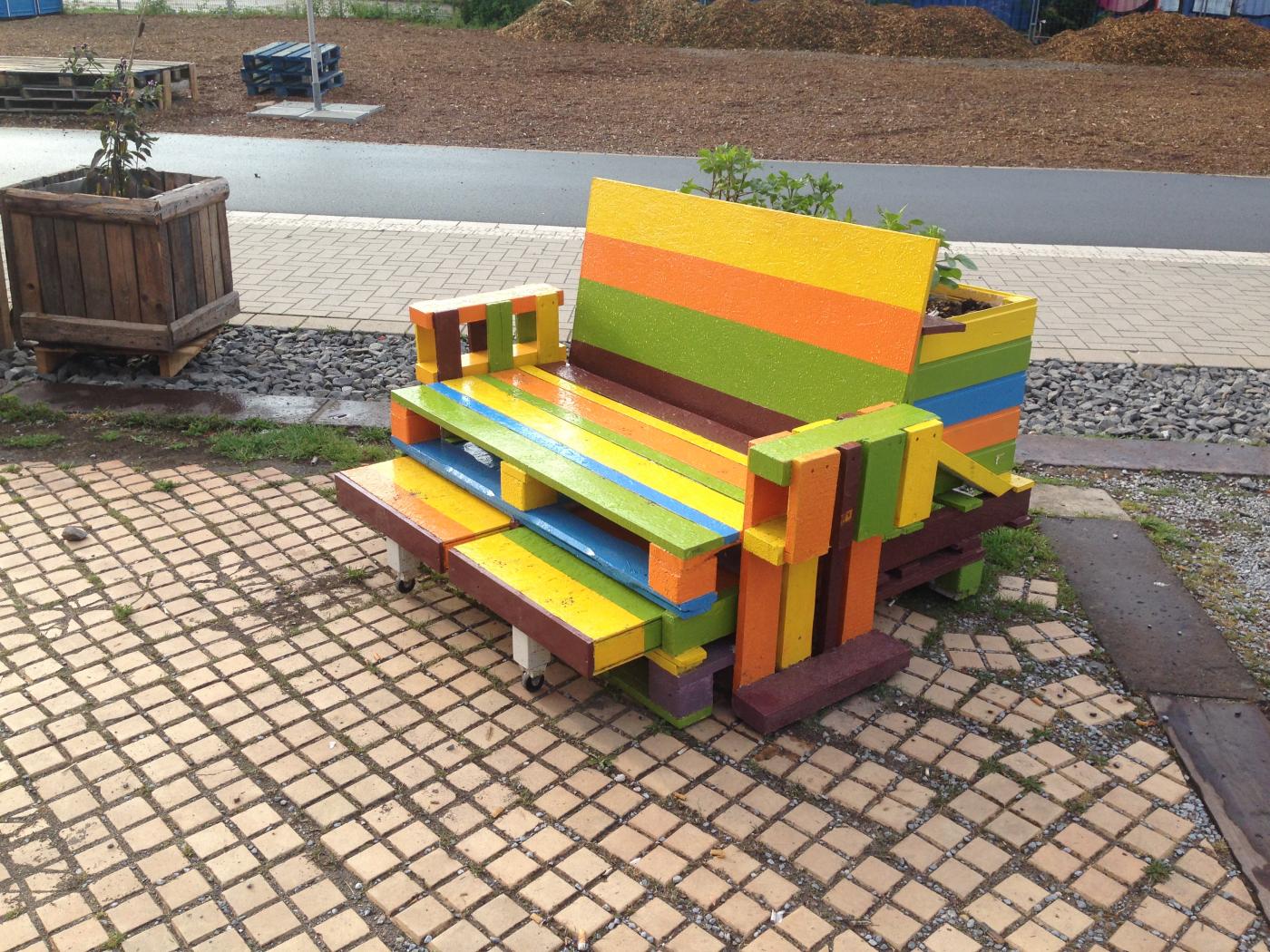


2 thoughts on “Bathroom cabinet: cupboard below sink from pallet timber”